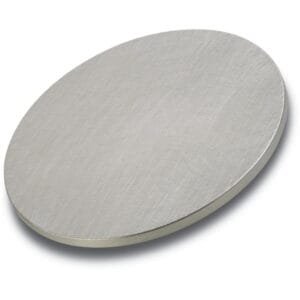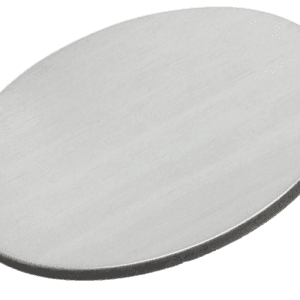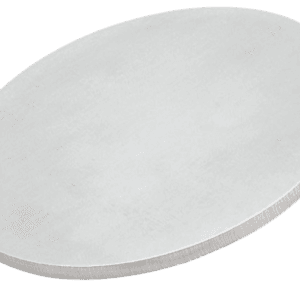Cobalt Terbium Iron Sputtering Target Description
The Cobalt Terbium Iron Sputtering Target is a specialized material used in sputter deposition, a technique for producing thin films with precise characteristics. In this process, high-energy ions bombard the target material in a vacuum chamber, causing atoms or particles to be ejected. These ejected particles then deposit onto a substrate, forming a thin film that retains the composition and properties of the target material. This technique is widely used in various industries, including electronics and optics, to create thin films with specific properties tailored to different applications.
Related Product: Cobalt Oxide Sputtering Target
Cobalt Terbium Iron Sputtering Target Specifications
| Compound Formula | Co/Tb/Fe |
| Molecular Weight | – |
| Appearance | Metallic Target |
| Melting Point | – |
| Density | – |
| Available Sizes | Dia.: 1.0″, 2.0″, 3.0″, 4.0″, 5.0″, 6.0″ Thick: 0.125″, 0.250″ |
Cobalt Terbium Iron Sputtering Target Handling Notes
Indium bonding is recommended for the Cobalt Terbium Iron Sputtering Target due to its characteristics that are not ideal for conventional sputtering processes, such as brittleness and low thermal conductivity. The Cobalt Terbium Iron alloy has low thermal conductivity and is susceptible to thermal shock, which can affect its performance during sputtering. Indium bonding helps mitigate these issues by providing a more stable and reliable connection between the target and the sputtering apparatus.
Cobalt Terbium Iron Sputtering Target Application
Cobalt Terbium Iron Sputtering Targets are used in a variety of applications, including:
- Magnetic Storage Devices: Leveraging their magnetic properties for high-density data storage.
- Magneto-Optical Devices: Utilizing the material’s unique optical and magnetic characteristics for advanced optical data storage and processing.
- Sensors: Implementing their sensitivity to magnetic fields for precise measurement and detection in various sensor technologies.
- Electronic and Optical Components: Employing the unique properties of the composite material to enhance the performance of various electronic and optical devices.
Cobalt Terbium Iron Sputtering Target Packaging
Our Cobalt Terbium Iron Sputtering Targets are meticulously managed during storage and transportation to ensure that they maintain their original quality.


 MSDS File
MSDS File



Reviews
There are no reviews yet.